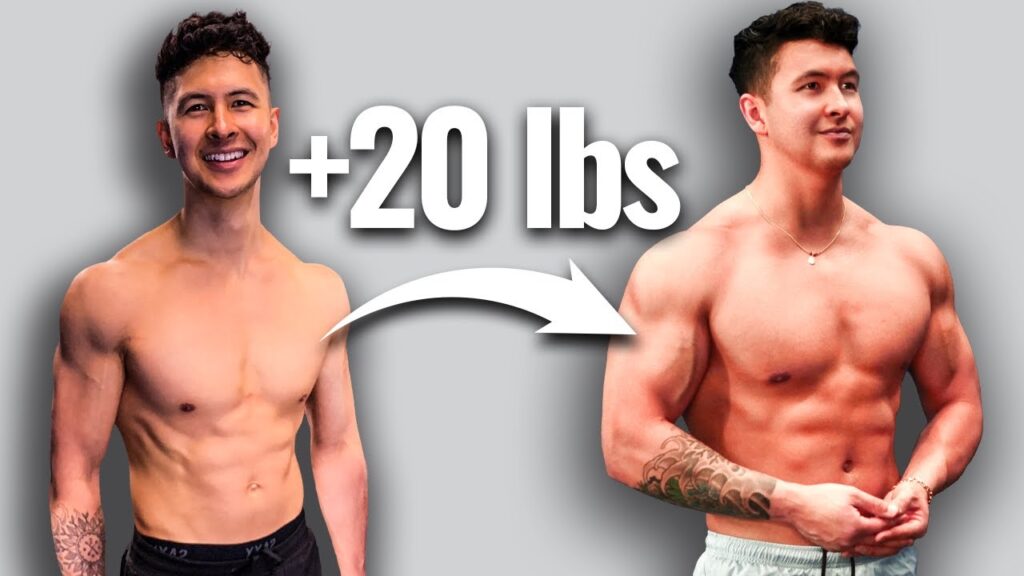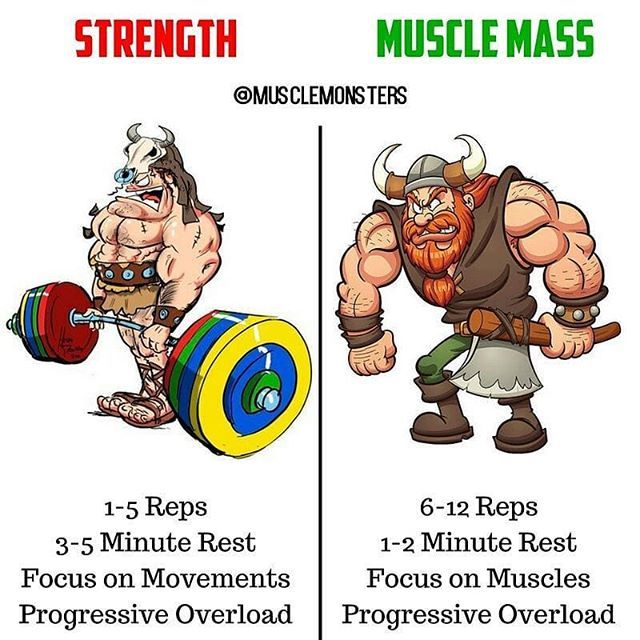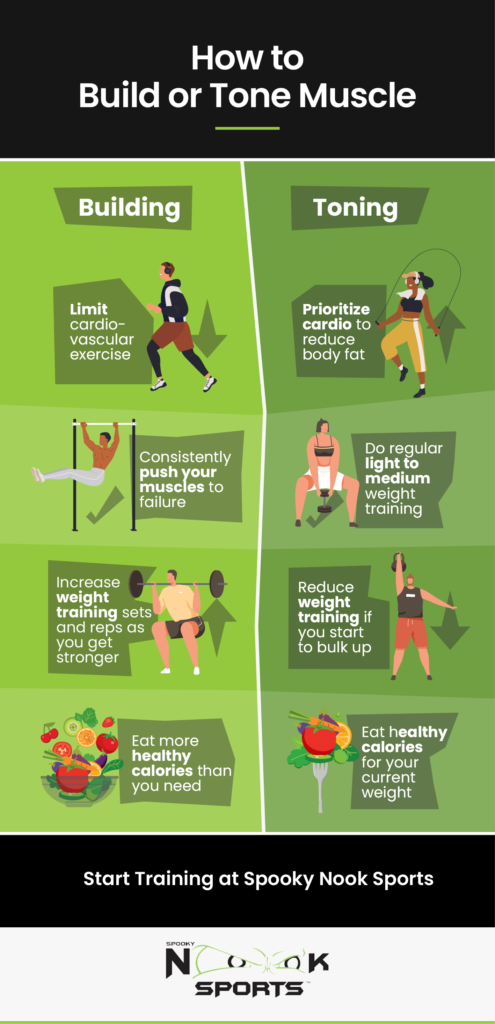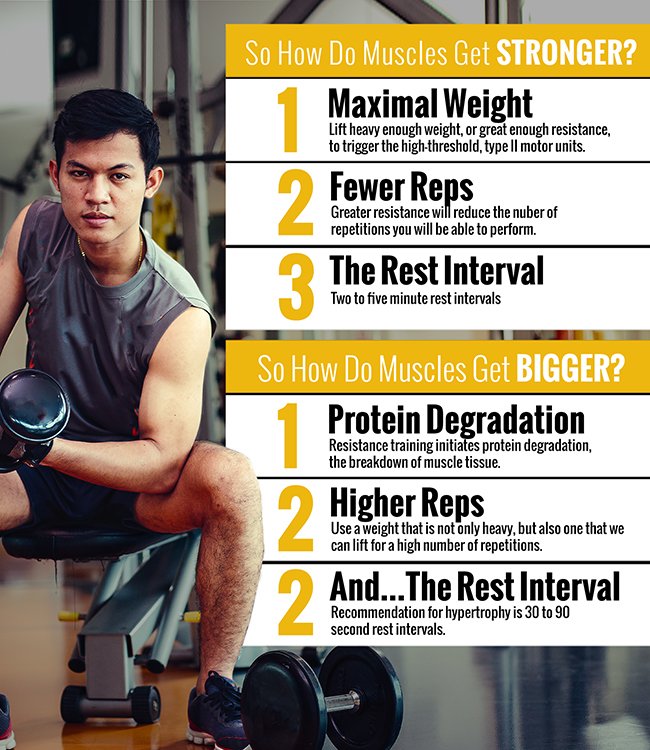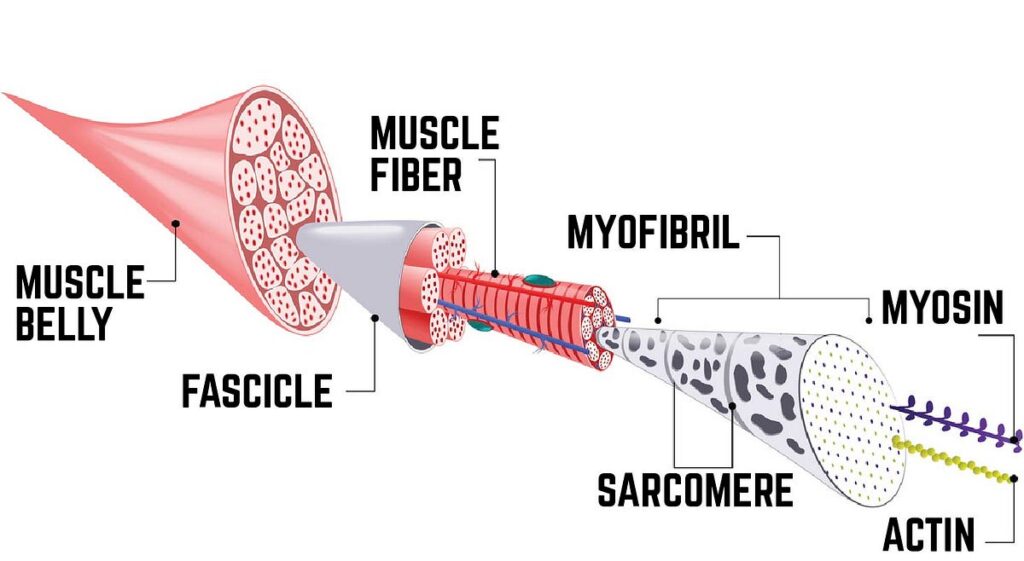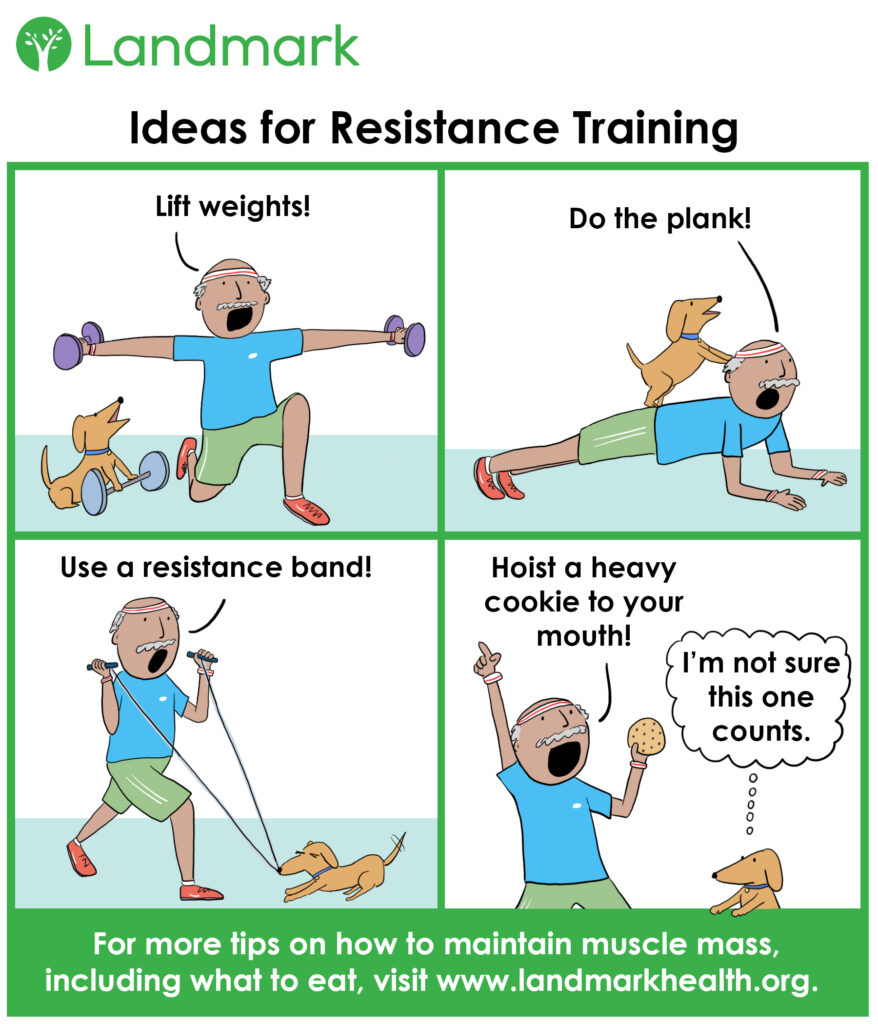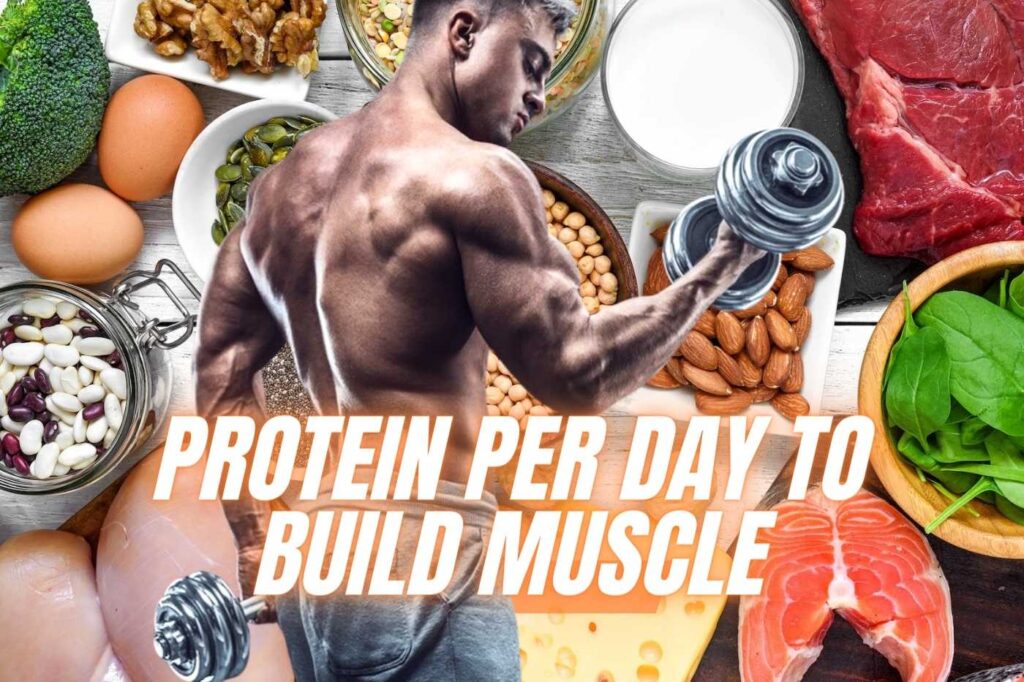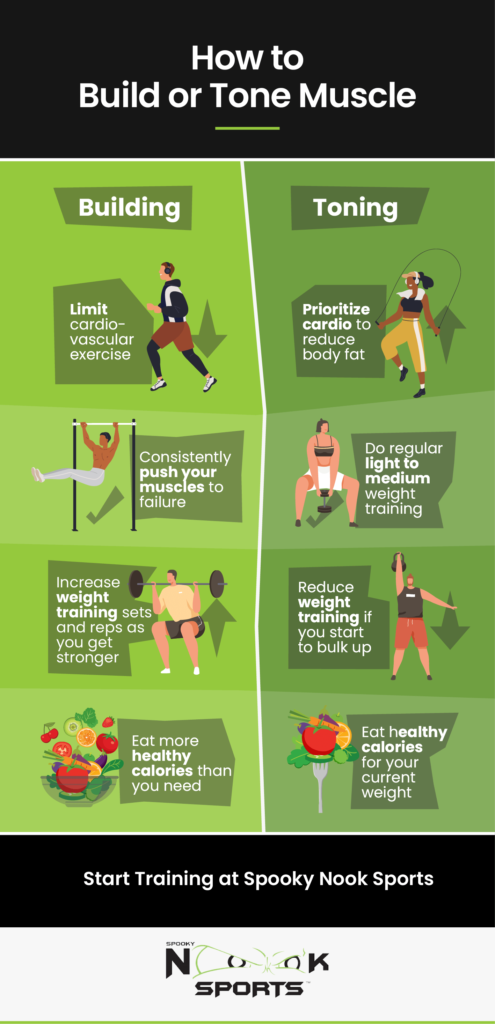People build muscle by engaging in resistance training and consuming a protein-rich diet. Consistency in exercise and nutrition is key.
Building muscle involves a combination of strength training, proper nutrition, and adequate rest. Strength training exercises, such as weightlifting, create tiny tears in muscle fibers. The body repairs these tears, making muscles bigger and stronger. Consuming a diet rich in protein supports muscle repair and growth.
Foods like lean meats, eggs, and legumes are excellent protein sources. Staying hydrated and getting enough sleep are also crucial. Sleep helps muscles recover and grow. Consistency in workout routines and diet ensures steady progress. Tracking progress and adjusting routines can maximize muscle-building efforts.

Credit: www.healthline.com
Muscle Growth Basics
Muscles are made of fibers. These fibers contract to produce movement. Each muscle fiber has many small parts called myofibrils. Myofibrils contain actin and myosin, which are proteins. These proteins help muscles to contract. Muscles also have connective tissues. These tissues hold the fibers together. Blood vessels provide oxygen and nutrients to the muscles. Nerves send signals to the muscles to make them move.
Hypertrophy means muscle growth. Lifting weights can cause hypertrophy. During exercise, muscle fibers get tiny tears. The body repairs these tears, making muscles bigger and stronger. Eating protein helps in muscle repair. Rest is also important for muscle growth. Muscles need time to recover after exercise. Consistent training leads to better muscle growth. Different types of exercises target different muscles. It’s good to change your workout routine.

Credit: www.nsta.org
Nutrition For Muscle Gain
Eating the right food helps build muscle. Macronutrients are key to this process. Proteins, carbohydrates, and fats make up macronutrients. Each of these plays a role in muscle gain. Proteins help repair and grow muscle. Carbohydrates give energy for workouts. Fats support overall body health. Balance these nutrients for the best results.
Protein is very important for muscle growth. It helps repair and build muscle fibers. Foods like chicken, fish, eggs, and beans are rich in protein. Eat protein at every meal. This helps muscles get stronger and bigger. Aim for about 1 gram of protein per pound of body weight each day.
Effective Workout Routines
Compound exercises work multiple muscle groups. These exercises include squats, deadlifts, and bench presses. Squats target the legs and glutes. Deadlifts focus on the back and hamstrings. Bench presses build the chest, shoulders, and triceps. These moves can help gain strength and muscle fast. They also burn more calories than isolation exercises.
Isolation exercises focus on one muscle group. These include bicep curls, tricep extensions, and leg curls. Bicep curls target the biceps. Tricep extensions work the triceps. Leg curls focus on the hamstrings. These exercises help to shape and define muscles. They are great for fixing muscle imbalances. Combining both types of exercises can give the best results.
Progressive Overload
Muscles grow by lifting heavier weights over time. Start with a weight you can lift comfortably. Gradually add more weight to challenge your muscles. This process is called progressive overload. Muscles adapt to the new weight and become stronger. It’s important to increase resistance slowly. Rapid increases can lead to injury. Use proper form to avoid strains and sprains.
Keep a workout journal to track your progress. Write down the weights you lift and the number of reps. This helps you see improvements over time. It also helps you plan future workouts. Seeing progress can motivate you to keep going. You can also use apps to track your workouts. These tools can show your progress in charts and graphs. Consistently tracking helps you stay on the right path.
Rest And Recovery
Sleep is vital for muscle growth. During sleep, the body repairs muscle tissues. This process helps muscles become stronger. Lack of sleep can slow down muscle recovery. Aim for 7-9 hours of sleep each night. Quality sleep also boosts energy levels. This makes workouts more effective. A consistent sleep schedule is crucial. Going to bed and waking up at the same time helps. Avoid screens before bedtime. Blue light can disrupt sleep patterns. Create a relaxing bedtime routine. This prepares the body for restful sleep.
Active recovery includes light activities. These activities promote blood flow to muscles. Walking, stretching, and yoga are good examples. These exercises should be low-intensity. They help reduce muscle soreness. Active recovery also speeds up healing. This allows for quicker muscle growth. It’s important to listen to your body. Avoid overexertion during active recovery. Consistent active recovery aids in overall fitness. This approach balances rest and activity. It supports sustainable muscle growth.

Credit: www.cosmeticskinclinic.com
Supplementation
People use protein powder to build muscle. It helps repair muscles fast. Creatine is another popular supplement. It boosts strength and muscle mass. Branched-chain amino acids (BCAAs) are also common. They help reduce muscle soreness. Beta-alanine improves workout performance. Fish oil supports joint health and reduces inflammation. Multivitamins ensure you get essential nutrients.
Always read the label before using any supplement. Follow the recommended dosage. Consult a doctor if unsure. Drink plenty of water. Do not mix too many supplements. Store supplements in a cool, dry place. Check the expiration date before use. Avoid using supplements as a meal replacement. They should complement a balanced diet. Listen to your body. Stop use if you feel unwell.
Avoiding Common Mistakes
Muscles need time to recover. Training too often can lead to injury. Rest days are just as important as workout days. Overtraining can make you feel tired and weak. It can also lead to burnout. To avoid this, follow a balanced workout plan. Include rest days in your schedule.
Using poor form can cause injuries. It can also make exercises less effective. Focus on doing exercises correctly. Start with lighter weights to learn proper form. Watch videos or ask a trainer for help. Good form helps target the right muscles. It also makes workouts safer and more effective.
Mental Strategies
Setting clear goals is very important. Goals help you stay focused. Start with small goals. Celebrate each small success. This keeps you motivated. Write down your goals. This makes them real and easier to follow.
Find a workout buddy. This makes exercise fun. Track your progress. Use a journal or an app. Seeing progress boosts motivation. Mix up your workouts. Variety keeps things interesting. Reward yourself for milestones. Small rewards can be big motivators.
Frequently Asked Questions
How Do People Build Muscle Quickly?
Building muscle quickly involves consistent strength training, proper nutrition, and adequate rest. Focus on compound exercises, like squats and deadlifts. Consume high-protein foods to support muscle growth. Ensure you get enough sleep to aid recovery.
What Foods Help Build Muscle?
Protein-rich foods like chicken, fish, and eggs are essential for muscle growth. Incorporate complex carbs like oats and sweet potatoes for energy. Healthy fats from avocados and nuts also support muscle building.
How Important Is Rest For Muscle Growth?
Rest is crucial for muscle recovery and growth. Muscles repair and grow during rest periods. Aim for 7-9 hours of sleep nightly. Also, include rest days in your workout routine.
Can Cardio Help In Building Muscle?
Cardio can complement muscle building by improving cardiovascular health and aiding fat loss. However, it should not replace strength training. Incorporate moderate cardio sessions, like running or cycling, alongside your weightlifting routine.
Conclusion
Building muscle requires consistency, proper nutrition, and effective workouts. Focus on progressive overload and recovery. Listen to your body and stay patient. Incorporate these strategies to see muscle growth over time. Achieve your fitness goals by staying dedicated and informed.
Your journey to a stronger physique starts now.

